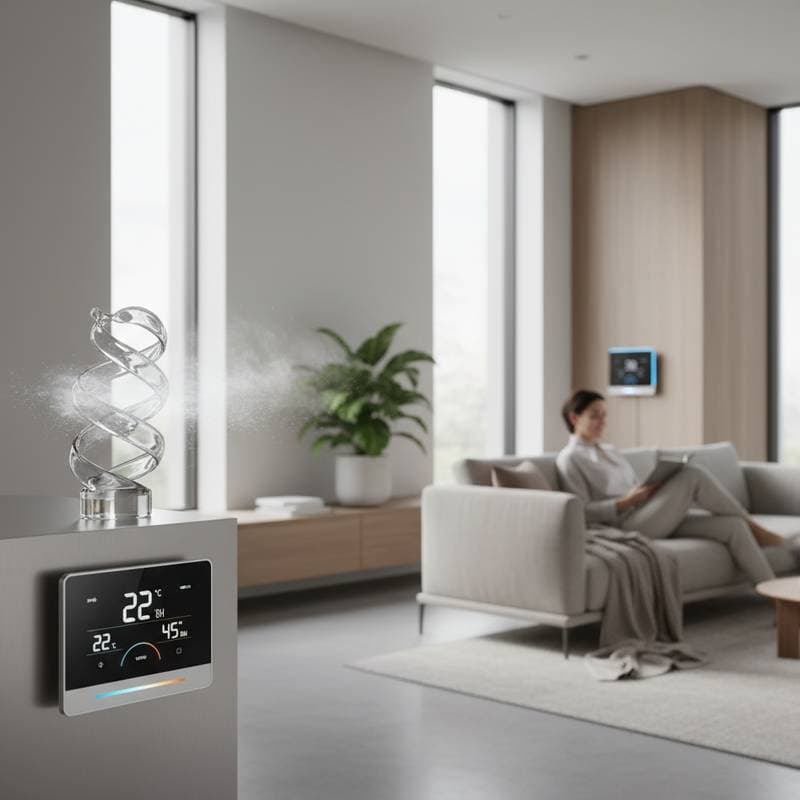Why Ductless HVAC Systems Outperform Traditional Ducted Options
Homeowners often face challenges with uneven heating and cooling due to outdated ductwork that leaks or accumulates contaminants. These issues lead to discomfort and higher utility bills. Ductless HVAC systems offer a reliable solution by providing precise climate control directly to each space without the drawbacks of extensive duct networks.
Challenges of Traditional Ducted Systems
Conventional HVAC setups depend on a complex web of ducts concealed in walls, ceilings, or floors. Over time, these ducts develop leaks that release up to 30 percent of treated air into unconditioned areas, according to industry research. In addition, ducts in humid or polluted environments trap dust, mold, and allergens, which compromise indoor air quality and necessitate frequent, expensive repairs.
Homeowners in older structures encounter further difficulties, as retrofitting ducts disrupts daily life and escalates costs. These inefficiencies prompt many to seek alternatives that deliver consistent performance without such vulnerabilities.
Advantages of Ductless HVAC Technology
Ductless systems, known as mini-splits, connect compact indoor units to an external compressor via refrigerant lines, bypassing the need for ducts. This design ensures direct delivery of conditioned air to specific zones. Professionals observe that installations yield immediate improvements in temperature regulation and overall home efficiency.
These systems adapt seamlessly to various home layouts, from apartments to sprawling residences. By eliminating duct-related losses, they promote sustainable operation and enhanced occupant well-being.
Essential Benefits of Ductless Systems
1. Superior Energy Efficiency and Reduced Costs
Ductless units incorporate inverter technology in their compressors, which modulates speed to match exact heating or cooling needs. This approach prevents the energy spikes associated with traditional on-off cycles. Users typically experience reductions in energy consumption ranging from 20 to 40 percent, translating to noticeable savings on monthly bills.
To maximize these gains, select units with high seasonal energy efficiency ratios. Pairing them with smart thermostats further optimizes performance by learning household patterns and adjusting automatically.
2. Zoned Comfort Tailored to Individual Preferences
Each indoor unit operates independently with its own controls, enabling customized temperatures in different rooms. For instance, maintain a cooler setting in the living area while keeping bedrooms warmer. This zoning capability minimizes energy use in unoccupied spaces and resolves common household disputes over central thermostat settings.
Implementation involves mapping your home's usage to determine the number of zones required. Such precision fosters a harmonious environment suited to diverse family needs.
3. Enhanced Indoor Air Quality
The absence of ducts reduces the risk of contaminant buildup, as air circulates directly from filtered units. Advanced multi-stage filters capture particles, pollen, and microbes effectively. This purification process proves particularly beneficial for individuals with respiratory conditions, creating a healthier living space.
Regular filter maintenance ensures sustained cleanliness. Consider models with optional UV lights or ionization features for even greater air purification.
4. Streamlined Installation Process
Unlike ducted systems that demand extensive construction, ductless setups require minimal intervention. Technicians typically complete the work in one to two days by drilling small holes for connections between indoor and outdoor components. This method preserves your home's structure and avoids the dust and disruption of major renovations.
Evaluate your property's layout beforehand to identify optimal unit placements. Hiring certified installers guarantees compliance with building codes and optimal system performance.
Key Factors to Evaluate Before Installation
Before proceeding, conduct a thorough assessment of your home's insulation levels and electrical infrastructure to support the system's demands. Costs vary: a basic single-zone unit ranges from $3,000 to $5,000, while comprehensive multi-zone systems can exceed $12,000 based on capacity and configuration. Engage qualified technicians who adhere to refrigerant handling regulations and perform precise load calculations.
Financing options and rebates for energy-efficient upgrades may offset initial expenses. Long-term, these investments yield returns through durability and operational savings.
Achieving Optimal Home Climate Control
Transitioning to ductless HVAC elevates daily living with reliable, efficient comfort. These systems integrate advanced features for precise management of your indoor environment. Embrace this upgrade to enjoy sustained benefits in energy conservation and air purity.
Frequently Asked Questions
Q: How long does a ductless HVAC system last?
A: Proper maintenance extends the lifespan of most units to 15 to 20 years. Schedule annual professional inspections and clean filters regularly to maintain efficiency.
Q: Can ductless systems provide both heating and cooling?
A: Yes, contemporary heat pump designs handle both functions effectively, even in moderate cold climates, by efficiently transferring ambient heat.
Q: What maintenance is required for ductless units?
A: Owners should clean filters monthly and arrange yearly professional servicing. These simple steps preserve optimal operation and prevent common issues.
Q: Are ductless systems suitable for larger homes?
A: Yes, scalable multi-zone setups cover extensive properties, delivering consistent comfort across multiple areas without compromising efficiency.



